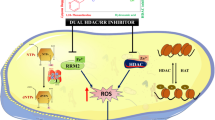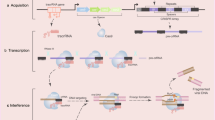Abstract
Oligonucleotides modified by clinically ineffective trans-diamminedichloridoplatinum(II) (transplatin) have been shown to be effective modulators of gene expression. This is so because in some nucleotide sequences the 1,3-GNG intrastrand adducts formed by transplatin in double-helical DNA readily rearrange into interstrand cross-links so that they can cross-link the oligonucleotides to their targets. On the other hand, in a number of other sequences these intrastrand adducts are relatively stable, which represents the major difficulty in the clinical use of the antisense transplatin-modified oligonucleotides. Therefore, we examined in this study, the stability of 1,3-GNG intrastrand adducts in double-helical DNA formed by a new antitumor derivative of transplatin, trans-[Pt(CH3NH2)2Cl2], in the sequence contexts in which transplatin formed relatively stable intrastrand cross-links which did not readily rearranged into interstrand cross-links. We have found that 1,3-GNG intrastrand adducts in double-helical DNA formed by trans-[Pt(CH3NH2)2Cl2] even in such sequences readily rearrange into interstrand cross-links. This work also suggests that an enhanced frequency of intrastrand cross-links yielded by trans-[Pt(CH3NH2)2Cl2] is a consequence of the fact that these DNA lesions considerably distort double-helical DNA in far more sequence contexts than parent transplatin. Our results suggest that trans-[Pt(CH3NH2)2Cl2]-modified oligonucleotides represent promising candidates for new agents in antisense or antigene approach.



Similar content being viewed by others
Abbreviations
- ATP:
-
Adenosine triphosphate
- Bp:
-
Base pair
- CL:
-
Cross-link
- DEPC:
-
Diethyl pyrocarbonate
- DMS:
-
Dimethyl sulfate
- FAAS:
-
Flameless atomic absorption spectroscopy
- HPLC:
-
High-performance liquid chromatography
- PAA:
-
Polyacrylamide
- Transplatin:
-
trans-Diamminedichloridoplatinum(II)
References
Weiss B (1997) Antisense oligodeoxynucleotides and antisense RNA novel pharmacological and therapeutic agents. CRC Press, Boca Raton
Dean NM, Cooper SR, Shanahan W, Taylor J, Myers K (2000) J Clin Ligand Assay 23:43–49
Galderisi U, Cascino A, Giordano A (1999) J Cell Physiol 181:251–257
Fabbro D, Muller M, Geiger T (1998). In: Crooke ST (ed) Antisense research and application. Springer, Berlin, Heidelberg, Platz 3/W-1000 Berlin 33/Germany, pp 395–425
Giraud-Panis M-J, Leng M (2000) Pharmacol Ther 85:175–181
Aupeix-Scheidler K, Chabas S, Bidou L, Rousset J-P, Leng M, Toulme J–J (2000) Nucleic Acids Res 28:438–445
Brabec V, Leng M (1993) Proc Natl Acad Sci USA 90:5345–5349
Boudvillain M, Guerin M, Dalbies R, Saison-Behmoaras T, Leng M (1997) Biochemistry 36:2925–2931
Kasparkova J, Marini V, Bursova V, Brabec V (2008) Biophys J 95:4361–4371
Colombier C, Boudvillain M, Leng M (1997) Antisense Nucleic Acid Drug Dev 7:397–402
Frybortova M, Novakova O, Stepankova J, Novohradsky V, Gibson D, Kasparkova J, Brabec V (2013) J Inorg Biochem 126:46–54
Park GY, Wilson JJ, Song Y, Lippard SJ (2012) Proc Natl Acad Sci USA 109:11987–11992
Comess KM, Costello CE, Lippard SJ (1990) Biochemistry 29:2102–2110
Brabec V, Sip M, Leng M (1993) Biochemistry 32:11676–11681
Brabec V, Reedijk J, Leng M (1992) Biochemistry 31:12397–12402
Leng M, Locker D, Giraud-Panis MJ, Schwartz A, Intini FP, Natile G, Pisano C, Boccarelli A, Giordano D, Coluccia M (2000) Mol Pharmacol 58:1525–1535
Kasparkova J, Vojtiskova M, Natile G, Brabec V (2008) Chem Eur J 14:1330–1341
Bailly C, Waring MJ (1997). In: Fox KR (ed) Drug-DNA interaction protocols. Humana Press Inc, 999 Riverview Dr/Ste 208/Totowa/NJ 07512-1165, pp 51–79
Ross SA, Burrows CJ (1996) Nucleic Acids Res 24:5062–5063
Brabec V, Neplechova K, Kasparkova J, Farrell N (2000) J Biol Inorg Chem 5:364–368
Boudvillain M, Dalbies R, Aussourd C, Leng M (1995) Nucleic Acids Res 23:2381–2388
Dalbies R, Boudvillain M, Leng M (1995) Nucleic Acids Res 23:949–953
Nielsen PE (1990) J Mol Recogn 3:1–24
Kasparkova J, Farrell N, Brabec V (2000) J Biol Chem 275:15789–15798
Acknowledgments
This research was supported by the Czech Science Foundation (Grants 13-08273S) and the Ministry of Education of the CR (Grant LH14317). Research of M. F. was also supported by the student project of the Palacky University in Olomouc (Grant IGAPrF 2014 029). The authors acknowledge that their participation in the EU COST Action CM1105 enabled them to exchange regularly the most recent ideas in the field of metallodrugs with several European colleagues. The authors also thank to Prof. Dan Gibson for a kind gift of trans-[Pt(CH3NH2)2Cl2].
Author information
Authors and Affiliations
Corresponding author
Electronic supplementary material
Below is the link to the electronic supplementary material.
Rights and permissions
About this article
Cite this article
Frybortova, M., Novakova, O. & Brabec, V. The stability of DNA intrastrand cross-links of antitumor transplatin derivative containing non-bulky methylamine ligands. J Biol Inorg Chem 19, 1203–1208 (2014). https://doi.org/10.1007/s00775-014-1176-8
Received:
Accepted:
Published:
Issue Date:
DOI: https://doi.org/10.1007/s00775-014-1176-8




